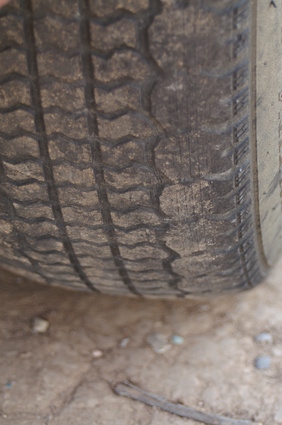
When your tires wear until they have a low tread, they become dangerous to drive on. Knowing the signs that your tire is nearing the end of its useful life helps you avoid blowouts and keeps you safe on the road.
Tires that have lost most of their tread have less grip on the road, making the car more prone to sliding on icy and wet roads. If your tires become bald, they are more likely to blow out or fail while driving, as well.

A tire with a tread depth of 1/16-inch or less must be replaced. You can test your tire's tread depth with a penny. With Lincoln's profile facing you upside down, place the edge of the penny into the tread. A tire with good tread will completely cover Lincoln's head. If you can see Lincoln's face, it is time for a new tire.

You can also tell a tire needs to be changed when you can see the wear bars even with the tread. These bars are placed by the tire maker horizontally in the space between each tread. When the wear bars and tread height is the same, it is time for a new tire.